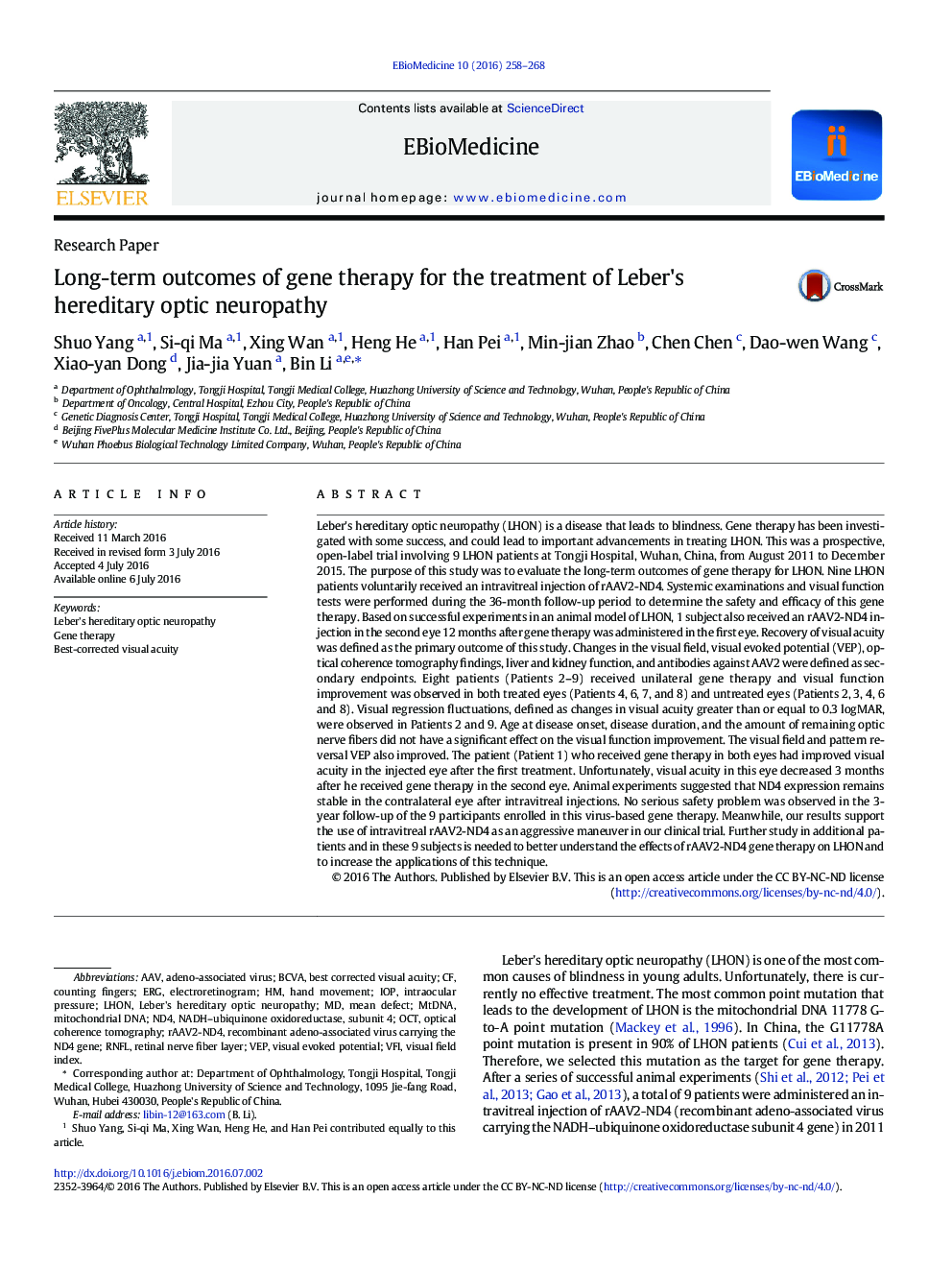| کد مقاله | کد نشریه | سال انتشار | مقاله انگلیسی | نسخه تمام متن |
|---|---|---|---|---|
| 2120637 | 1546889 | 2016 | 11 صفحه PDF | دانلود رایگان |

• A long-term study of efficacy of gene therapy for Leber's hereditary optic neuropathy.
• No serious adverse effects were noted in the 9 participants over a 3-year period.
• Five patients experienced an improvement in visual function.
• Gene therapy is a promising treatment for Leber's hereditary optic neuropathy.There are currently no effective treatments for Leber's hereditary optic neuropathy (LHON). Short-term studies using virus-based gene therapy have yielded promising results. We performed systemic examinations and visual function tests to evaluate the long-term safety and efficacy of gene therapy for LHON. Over a 3-year follow-up period, five out of nine patients had visual function improvement, and no serious adverse effects were noted.
Leber's hereditary optic neuropathy (LHON) is a disease that leads to blindness. Gene therapy has been investigated with some success, and could lead to important advancements in treating LHON. This was a prospective, open-label trial involving 9 LHON patients at Tongji Hospital, Wuhan, China, from August 2011 to December 2015. The purpose of this study was to evaluate the long-term outcomes of gene therapy for LHON. Nine LHON patients voluntarily received an intravitreal injection of rAAV2-ND4. Systemic examinations and visual function tests were performed during the 36-month follow-up period to determine the safety and efficacy of this gene therapy. Based on successful experiments in an animal model of LHON, 1 subject also received an rAAV2-ND4 injection in the second eye 12 months after gene therapy was administered in the first eye. Recovery of visual acuity was defined as the primary outcome of this study. Changes in the visual field, visual evoked potential (VEP), optical coherence tomography findings, liver and kidney function, and antibodies against AAV2 were defined as secondary endpoints. Eight patients (Patients 2–9) received unilateral gene therapy and visual function improvement was observed in both treated eyes (Patients 4, 6, 7, and 8) and untreated eyes (Patients 2, 3, 4, 6 and 8). Visual regression fluctuations, defined as changes in visual acuity greater than or equal to 0.3 logMAR, were observed in Patients 2 and 9. Age at disease onset, disease duration, and the amount of remaining optic nerve fibers did not have a significant effect on the visual function improvement. The visual field and pattern reversal VEP also improved. The patient (Patient 1) who received gene therapy in both eyes had improved visual acuity in the injected eye after the first treatment. Unfortunately, visual acuity in this eye decreased 3 months after he received gene therapy in the second eye. Animal experiments suggested that ND4 expression remains stable in the contralateral eye after intravitreal injections. No serious safety problem was observed in the 3-year follow-up of the 9 participants enrolled in this virus-based gene therapy. Meanwhile, our results support the use of intravitreal rAAV2-ND4 as an aggressive maneuver in our clinical trial. Further study in additional patients and in these 9 subjects is needed to better understand the effects of rAAV2-ND4 gene therapy on LHON and to increase the applications of this technique.
Journal: EBioMedicine - Volume 10, August 2016, Pages 258–268